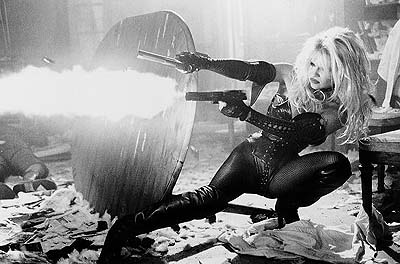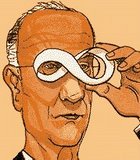Legardary comic book artist Alex Nino recently returned to the medium after too-long an absence with a book called
God the Dyslexic Dog. I’m not sure

what’s it’s about (other than god as a ‘dyslexic dog’—a point made in just about EVERY panel) but anything with his art in it is worth picking up (despite a mess of a colouring and printing job that pretty much obscures Nino’s fine pen line).
Nino’s name may not have a high recognition factor but he got his start in NA in the 70’s as one of many Philipino artist’s picked up by DC when they exponentially expanded their line and needed new talent fast. Nino never had a ‘name’ book, never did a superhero that I know of, doing mostly SF and horror short stories, back-ups, and stories for Eerie, Creepy and the other anthology mags that flourished for a while. His art is best described as early Walt Simonson on hallucinogens filtered through that fluid style of the best of the Philipinos, e.g. Nestor Redondo – who’s short lived book ‘Rima, The Jungle Girl’ is worth picking up from the 5 cent bins for the gorgeous art and Nino’s bizarre SF back-up story (
see below). Hurrah for anyone with enough sense to have him drawing stories again.

Space Voyagers © DC Comics
CLICK EACH PAGE TO ENLARGE AND READ





















